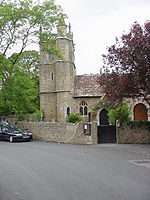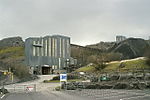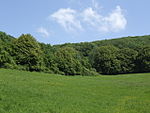Shipham
Civil parishes in SomersetMendip HillsVillages in Sedgemoor

Shipham (grid reference ST445575) is a village and civil parish in Somerset, England. It is on the western edge of the Mendip Hills near the A38, approximately 15 miles (24 km) south of Bristol. It is in the local government district of Sedgemoor. The parish includes the village of Rowberrow and the hamlet of Star. The parish population, according to the 2011 census, is 1,087.
Excerpt from the Wikipedia article Shipham (License: CC BY-SA 3.0, Authors, Images).Shipham
6th Avenue, Nueva York Manhattan
Geographical coordinates (GPS) Address Nearby Places Show on map
Geographical coordinates (GPS)
| Latitude | Longitude |
|---|---|
| N 51.314 ° | E -2.796 ° |
Address
23rd Street (PATH to 33rd Street)
6th Avenue
10019 Nueva York, Manhattan
Nueva York, Estados Unidos de América
Open on Google Maps










